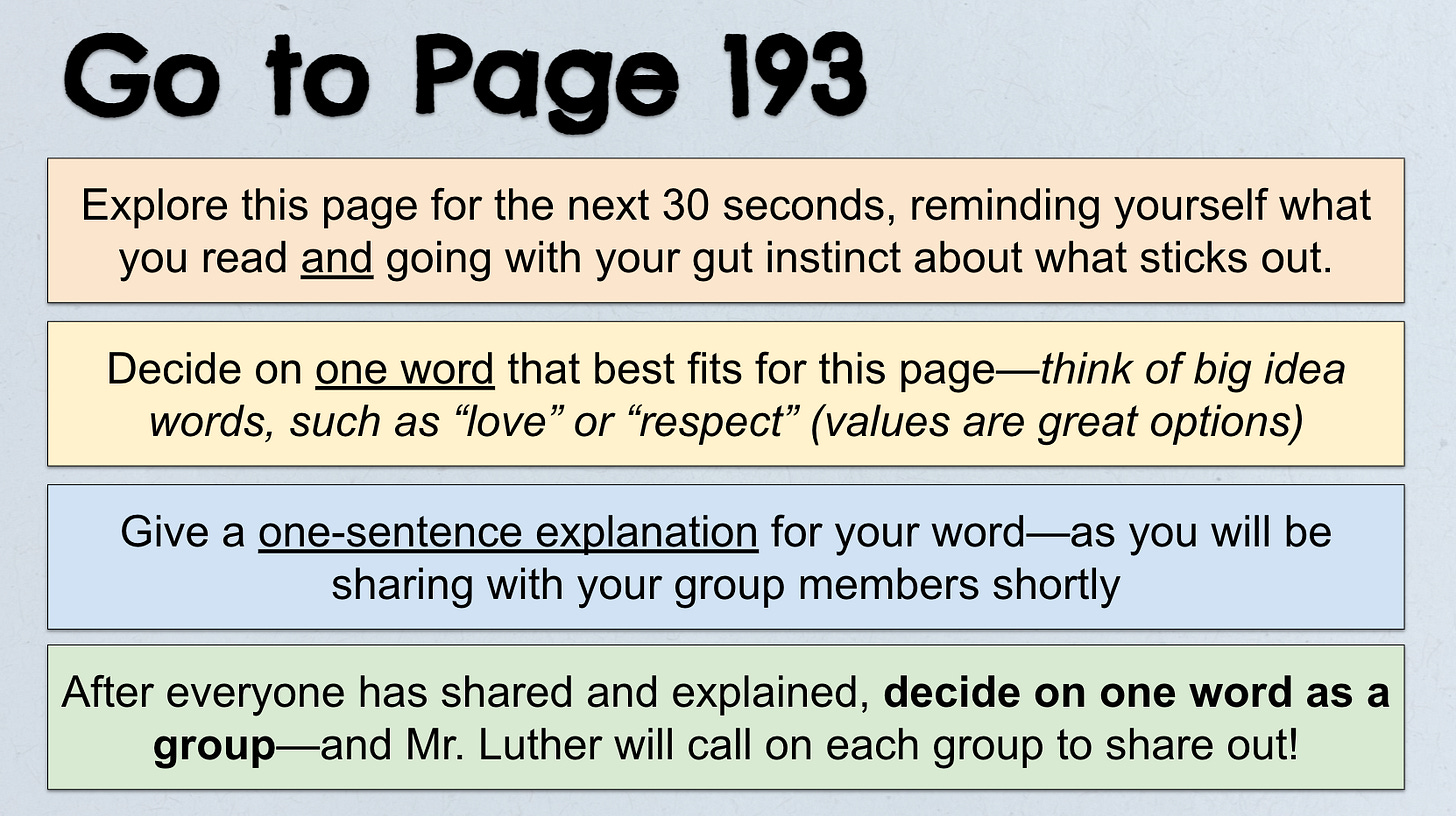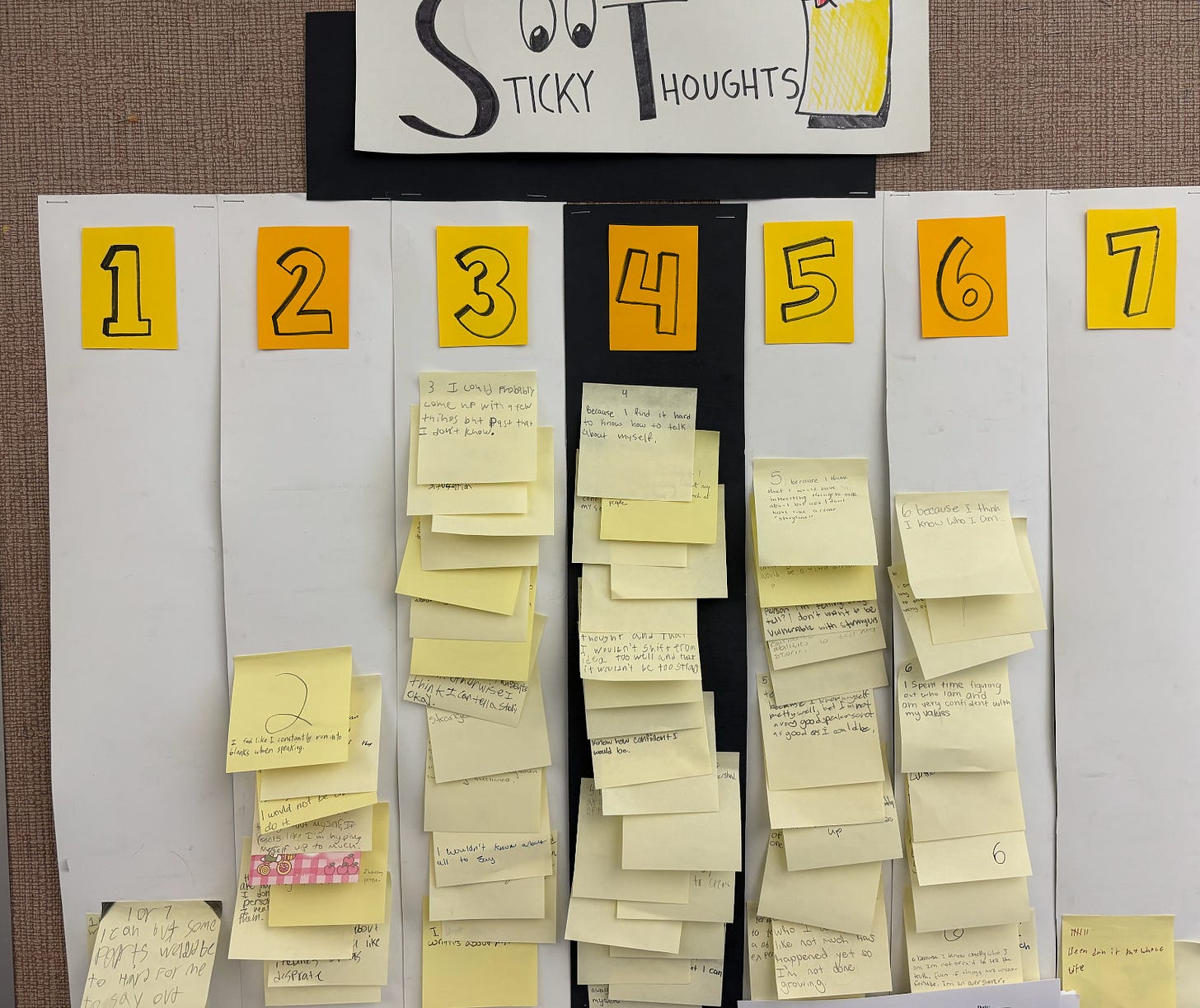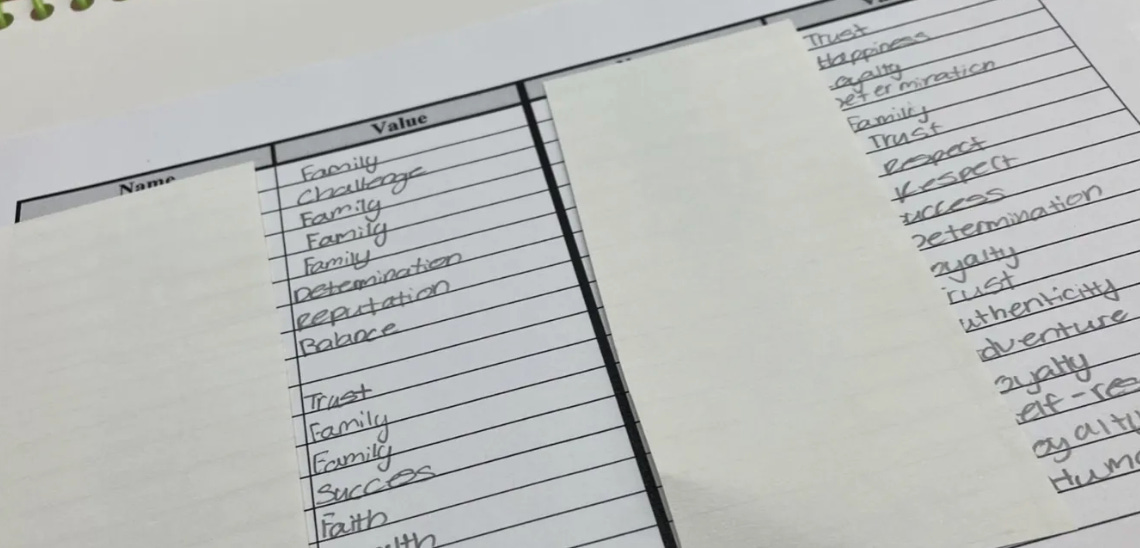Building a Foundation for Collaboration
classroom strategies that help to begin the school year
A lot takes place in the first few weeks of any classroom.
Norms are established and expectations are set and the trajectory of wherever the classroom community is heading is, at least for awhile, established. Add in all the logistical curveballs (and avalanches) that many schools inflict on the foundational weeks of building a classroom community, and the stakes are considerable—as well as considerably challenging.
What can get lost, too often, in my opinion? Building an intentional foundation for what collaboration will look like in the classroom going forward.
Quick-trigger fixed mindsets from teachers don’t help, either, if we’re being honest. If I had a dollar for every time I’ve heard “well, this class isn’t going to talk to each other this year” or “this class is way too talkative for us to have discussions—so much for that!”?
Well, as the saying goes, I’d have a lot of dollars.
The belief behind today’s post: the work we do as teachers in laying a foundation for collaboration in the first few weeks of any classroom matters a lot, and I think there are some specific steps you can take as a teacher in those initial weeks to build a trajectory towards some really cool places down the road as a classroom community.
(And none of them, I assure you, involve the word “icebreaker.”)
⓵ Have everyone share a one-word answer
I go into more detail in the video above with this one, but if I was going to pick one specific strategy that every teacher would benefit from adding to their tool belt, this would be the one.
Present a set of limited, often one-word options to students (ex: agree/disagree)
Have students pick one to write down and expand upon with a brief explanation
Call on every single student in the room by name and have them share their one-word answer (this takes time but it matters!)
Then have them debrief with a partner or small group, explaining their reasoning
That is it! But that is it, too, in terms of building some really important foundations in the classroom: [a] that every student’s voice belongs in your classroom community; [b] that every student’s name is said aloud in your classroom community; [c] and that talking with each other is an integral, daily part of your classroom community.
Talk about a foundation—all from one easy-to-implement strategy as a teacher.
⓶ Utilize consensus questions by group
Another thing I do quite often in those initial weeks? After students have arrived at their own individual answer, I have them “arrive at consensus” as a partnership or group before I call on them (plural!) to share out their answer.
Then, similar to the previous strategy, I go around the room and call on the groups (ex: “Joey, Andrea, or Sonja!”) and one of them shares out the answer they arrived at collectively.
Why I like mixing this in particularly in those early weeks: [1] it adds urgency to the group deliberation as they know that they are going to have to share out an answer; [2] it offers a soft “opt out” for those who don’t want to share out the answer within the partnership or group; and [3] it helps me learn the dynamics that are forming in smaller groups, as I can even keep track of “who shares” in a given class period.
In this way, “consensus questions” are helpful in both directions: in giving students a chance to lean into conversation with each other and in giving me a better understanding of the new classroom community as we build its foundation.
⓷ Build out-of-seat opportunities into lessons
Particularly in my block schedule classes, I try as much as possible to design opportunities for students to get out of their desks in every single lesson—and establishing this norm in the opening weeks is so much easier, I’ve learned, than trying to revive out-of-seat activities later in the term.
Of course, there are many ways you can achieve this as a teacher—but in this space I’ll share just one of the most effective tools I’ve found: our “Sticky Thoughts” poster. (I’m not sure if I can technically call it a “poster” but for now it will do.)
A few years back I had a blank space on my bulletin board and some scraps of posters lying around, so I came up with a 1-7 set of strips that I could affix to the wall, which you can see pictured above. (I added the black strip in the middle because there wasn’t enough white poster paper on that day, but it has ended up being the perfect addition—as it also allows me to say “No 4’s!” sometimes.)
This part of the classroom has become a really easy way for me not only to record results across different class periods but also to create opportunities for several ways students can get out of their seats in a lesson. For example:
I call out #’s for students to stand and place on the board, one at a time (“If you wrote a 7, go add your sticky note to the poster,” etc.)
I have students stand and find someone not in their group to share their answer with before placing their sticky note on the wall
I ask students to line up without talking with their numbers 1-7 across the room, and then to share their reasoning with the person closest to them before—you guessed it—adding their sticky note to the wall
Again, these are just some of so many potential activities to get students out of their seats, all from a haphazard collection of poster scraps I found a few years back.
But these poster scraps are now very much a part of the foundation-building that takes place in our classroom. And they aren’t going anywhere any time soon.
⓸ Oh, and one more thing: start with assigned seats
I’m not going to write the full case out here, as I did so already two years ago and I pretty much continue to believe every single word of that piece. (I did include a new video, though, reaffirming my belief about why assigned seats mean can do so much good to build a classroom community—especially in this current moment.)
Instead, as someone who grew up on the Oregon coast and saw over time how once-majestic houses on the cliffs with scenic views eventually had to be abandoned as those cliff sides eroded into the sea, I just wanted to toss in the reminder that the structural choices you make for your classroom can either help reify the foundation of the community that can take place within it.
Or they can undermine it.
Which I think is worth considering as you plan for your classroom community going into a new school year.
Begin with the end in mind with classroom community
The second week of school, each student in our classroom tapes a roster of their classmates into their spiral notebook and then we take time to write down the top value each of them chose in our opening activity.
If you care about community in your classroom, I believe, you cannot wait to begin building it.
As teachers, we all have been told repeatedly (and correctly!) that it is good pedagogical practice to consider what you want students to know at the end of an instructional unit on an assessment and then to plan backwards from there.
“Begin with the end in mind,” Franklin Covey also reminds (and reminds, and reminds, and reminds.) It’s a good habit, after all.
We know this!
Therefore: take a second right now and hold a vision of the classroom community you want to arrive at in your classroom by the end of the year.
What do you want it to look and feel like for students? What do you want the experience of academic discussion to be? What do you want to be true by the time students walk out of your classroom at the end of the year, in their eyes?
(For me? I like to think about endings like this a lot going into a new year.)
The work to make that vision a reality starts Day 1, and not just in terms of learning targets. Whether with strategies to build collaboration and community shared in this post or myriad, myriad others—you know your classroom and context best!—I think the most important thing is to hold yourself accountable to a vision of what your classroom can become and then to be intentional about immediately building a path to get there.
Because when you do get there? It is a really, really incredible thing.
Shouting Out Some Other Great Reads
Here are a handful of things that I’ve read over the past couple weeks that resonated with my own thinking in different ways that I wanted to uplift here before signing off:
Some Things Need to Be Grown, Not Graded, and Definitely Not Automated: I continue to share the work is doing with Rhetorica around AI’s ongoing collision with education, and his piece this week left me resonating for hours afterwards: “Learning itself, not simply assessment, is now being impacted by AI.” The writing is always mindful of the day-to-day experience of those in the classroom, but also pushes my own understanding around AI in an important way.
Will AI Drive the Classroom Now?: While I know that and I don’t see eye-to-eye on all things AI, we do share a lot of values and this piece underscored that for me: “The current edtech hype makes it easy to forget that most of what happens in a great classroom has nothing to do with AI.”
Kicking Away the Ladder: Yes, I focus a ton here about strategies and perspectives that live mostly within the four walls of the classroom, but I also very much believe it is important to pay attention to what is going on outside of our classrooms and schools. Following the work of has been essential for me, consequently, particularly all the infuriating things going on in education at a broader level: “Today we’re watching as a growing number of states, with the aid of the federal government and the ‘big beautiful bill,’ embark on their own version of the Kansas experiment—slashing spending, destabilizing public schools, and limiting what’s possible for kids.”
Plant Flowers: all I’ll do with this beautiful, important reflection from is share this quote that is one of the best things I’ve read all summer: “Healthy relationships with our technology cannot stem from a desire to use them less. A beautiful garden is not made by deciding which weeds to pull. One must plant flowers.”
What I Believe: I know that I reference his work quite a bit but keeps writing pieces like this that not only push my thinking but remind me of what we all ought to have been doing all along. It isn’t the particulars of this piece, either—it is the notion of going back to our core beliefs as educators and taking the time to lay out what really matters to us. Worthwhile for us all to do from time to time, and Adrian does so with beautiful generosity here.
Note: featured image for post from Pexels.com, taken by Rodolfo Quirós






We agree more than you think!
These are great tips! I love the out of the seat tip too! I feel like this is something a lot of teachers worry about! Structuring out of seat time is great. We all need to stretch our legs!